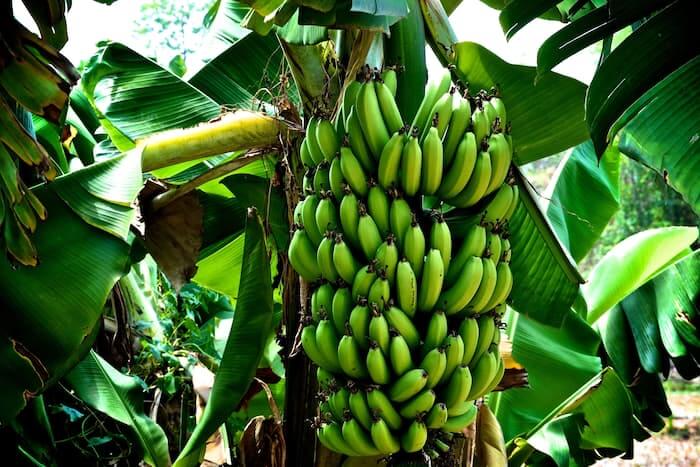
Bananas are an important crop in many parts of Africa, including Kenya, Zambia, Tanzania, and Nigeria. They are a valuable source of nutrition and income for farmers in these countries. If you are interested in starting a banana farm in any of these regions, here is a detailed step-by-step guide to help you get started:
- Site Selection:
- Choose a location with suitable soil and climate conditions for banana cultivation.
- Bananas prefer well-drained, loamy soil with good organic matter content.
- The site should receive sufficient sunlight and have access to water for irrigation.
- Variety Selection:
- Each country has specific banana varieties that are well-adapted to the local conditions. Here are some examples:
- Kenya: Grand Nain, Williams, and FHIA-17.
- Zambia: Gros Michel, Williams, and Yangambi Km5.
- Tanzania: Mchare, Poyo, and Ndizi.
- Nigeria: Dwarf Cavendish, Giant Cavendish, and Pisang Awak.
- Choose varieties based on their resistance to diseases, market demand, and suitability to your region.
- Each country has specific banana varieties that are well-adapted to the local conditions. Here are some examples:
- Land Preparation:
- Clear the land of any vegetation, rocks, or debris.
- Plow or till the soil to a depth of about 30 centimeters.
- Incorporate well-decomposed organic matter, such as compost or manure, to improve soil fertility.
- Planting:
- Dig holes that are about 30 centimeters deep and wide, spaced approximately 2-3 meters apart.
- Place the banana suckers or plantlets in the holes, ensuring that the growing point is just above the soil surface.
- Backfill the holes with soil and press gently to eliminate air pockets.
- Maintain proper spacing to allow air circulation and facilitate management practices.
- Irrigation:
- Bananas require regular and adequate water supply.
- Depending on the rainfall pattern in your region, supplement irrigation during dry spells.
- Implement a drip or flood irrigation system to ensure efficient water use.
- Avoid over-watering, as it can lead to root rot and other diseases.
- Fertilization:
- Conduct a soil test to determine the nutrient status of your soil.
- Based on the results, apply a balanced fertilizer to meet the crop’s nutrient requirements.
- Use organic fertilizers, such as compost or well-rotted manure, to enhance soil fertility.
- Split the fertilizer application into multiple doses throughout the growing season.
- Weed Control:
- Implement effective weed control measures to prevent competition for nutrients and water.
- Manual weeding is common, especially during the early stages of growth.
- Mulching with organic materials can help suppress weed growth and conserve soil moisture.
- Disease and Pest Management:
- Regularly monitor the plants for signs of diseases and pests.
- Common diseases include Panama disease (Fusarium wilt) and Banana Xanthomonas Wilt (BXW).
- Implement preventive measures such as using disease-resistant varieties, practicing crop rotation, and maintaining good field hygiene.
- For pest control, use integrated pest management (IPM) strategies, including cultural, biological, and chemical control methods when necessary.
- Pruning and Deleafing:
- Remove any dead or diseased leaves to maintain plant health and minimize pest and disease spread.
- Cut off excess suckers to ensure proper plant spacing and enhance fruit production.
- Prune the inflorescence (flowering stem) after fruit harvest to improve future yields.
- Harvesting:
- Bananas are typically harvested when the fruit reaches its mature stage but is still green.
- The time to harvest varies depending on the variety and local market demand.
- Cut the bunches with a sharp knife, leaving a portion of the stem attached to the fruit.
- Handle the harvested bananas with care to avoid bruising.
- Post-Harvest Handling and Marketing:
- Sort the harvested bananas based on their size, quality, and ripeness.
- Pack them in appropriate containers, such as boxes or crates, to protect the fruit during transportation.
- Consider local market demands and explore marketing options, such as selling to wholesalers, retailers, or processing industries.
Remember to consult local agricultural experts, cooperative societies, or extension services for specific recommendations tailored to your region. Good agricultural practices, proper disease and pest management, and market awareness are crucial for successful banana farming in Kenya, Zambia, Tanzania, and Nigeria.
Stay updated with the latest farming tips and agriculture industry news from Africa by subscribing to our newsletter. Don’t miss out on valuable insights and updates. Follow us on Twitter, LinkedIn, and Facebook to join our farming community and stay connected with us.


















